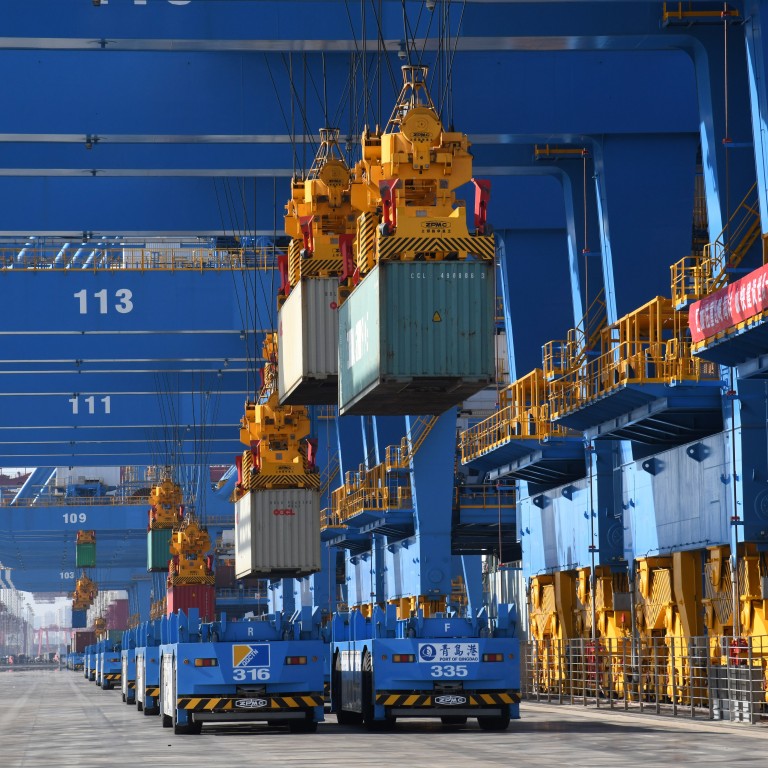
China’s exports fall again in November as trade war continues to bite
- Shipments down 1.1 per cent in month, but imports grow for first time since April
- Figures come just a week before US is set to impose fresh tariffs on imports of Chinese goods
China’s exports in November fell 1.1 per cent from a year earlier, marking a fourth successive monthly decline as the pain of the trade war with the United States continues to hit the world’s second-largest economy.
Imports, meanwhile, grew 0.3 per cent in November – their first monthly increase since April and only the second this year – beating the Bloomberg poll, which forecast a 1.4 per cent decline.
China’s trade balance for November stood at US$38.73 billion, down from US$42.91 billion in October and lower than analysts’ expectations of US$44.3 billion.
Exports did not get the expected jolt from seasonal factors, such as the Christmas rush to buy consumer electronics goods.
November’s export decline comes despite a low comparison base. Shipments grew by just 3.9 per cent in November 2018, following gains of 14.3 per cent and 13.9 per cent in the previous two months.
Detailed figures confirm the decline in Chinese trade with the US, while that with the European Union and the 10 members of the Asean expanded.
Chinese exports to the US fell 12.5 per cent year on year in US dollar terms in the first 11 months, while imports dropped 23.3 per cent.
But exports to the EU rose 4.5 per cent in the year through November, while imports rose 0.3 per cent. Exports to Association of Southeast Asian Nations countries rose 11.5 per cent during the period and imports gained 2.8 per cent.
“In general, we don’t put a lot of stock in the purchasing managers’ indices,” Trivium China, an economic consultancy, said in a note on Thursday. “That’s especially true when the readings are hovering around the 50-point line where its hard to get a genuine signal from the index.”
In general, we don’t put a lot of stock in the purchasing managers’ indices. That’s especially true when the readings are hovering around the 50-point line where its hard to get a genuine signal from the index
South Korean exports reported a double digit slump for the 12th successive month in November.
Meanwhile, on Thursday, US customs data for October confirmed the impact of the tariff war.
America’s goods trade deficit for the month fell 27.5 per cent year on year to US$31.3 billion – its biggest monthly drop for more than three years – amid plummeting purchases of Chinese products.
The slump in trade between the world’s two biggest economies is not unexpected. Heavy tariffs have caused buyers to look for alternative supplies, manufacturers to leave China and retailers in the United States to stuff their inventories in advance to avoid tariffs.
“We’re concerned that the longer this drags on the more difficult it will be to win back customers,” Ker Gibbs, chairman of the US Chamber of Commerce in Shanghai, said in an interview this week.
“Because the US is not working with like-minded partners, China has been moving to European and Japanese suppliers.”

